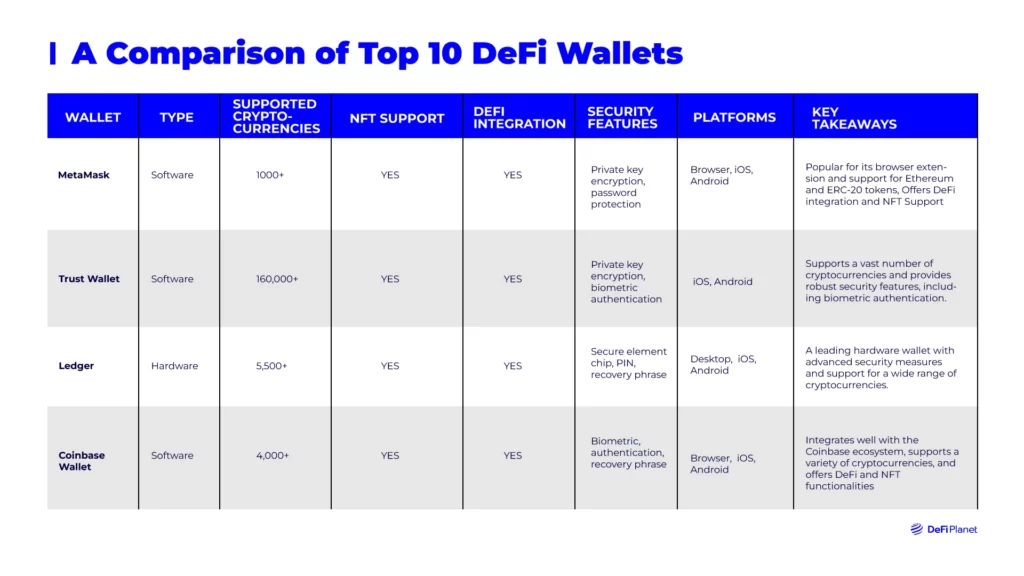In 2025, keeping your crypto safe is more important than ever. With scams, hacks, and DeFi risks on the rise, protecting your Bitcoin, Ethereum, or Solana is a must. This guide will walk you through the biggest threats—like phishing, wallet scams, and smart contract flaws—and share simple, practical steps to secure your assets. Whether you’re trading, staking, or hunting airdrops, let’s build your defenses and keep your digital funds safe in the blockchain world!
What Means Crypto Security?
Crypto security is all about protecting your cryptocurrency and blockchain activities from theft, fraud, and unauthorized access. It involves securing your private keys—the secret codes that control your funds—and keeping your wallets, transactions, and DeFi interactions safe. In a decentralized world where you’re your own bank, crypto security is your responsibility. It’s your shield against risks, whether you’re trading, staking, or chasing airdrops.
What Are the Main Threats When You Use Crypto and DeFi?
The crypto and DeFi space is full of opportunities, but it’s also packed with dangers. Here are the top threats in 2025:
- Phishing Attacks: Fake websites or emails trick you into sharing your keys. A 2023 MetaMask phishing scam stole $1M in ETH.
- Rug Pulls: DeFi projects disappear with your funds. The Squid Game token’s $3.3M exit in 2021 is a notorious example.
- Exchange Hacks: Centralized platforms like Binance lost $570M in 2022. Your coins are at risk if you don’t hold them yourself.
- Malware: Keyloggers can swap your addresses. A 2024 malware attack stole $8M from users.
- Social Engineering: Scammers on Discord or X pretend to be support staff. One user lost $500K in 2023 this way.
Takeaway: These threats exploit trust and tech—knowing them helps you prepare for deeper risks.
DeFi Wallet Scams
DeFi wallets like Rabby or Phantom are your gateway to decentralized finance, but they’re prime targets for scams. Here’s how scammers attack:
- Fake Apps: Bogus wallet downloads, like a fake MetaMask app in 2022, stole $2M by grabbing seed phrases.
- Phishing Links: Malicious dApp links (e.g., “claim your airdrop”) drained $34M in a 2021 PancakeSwap scam.
- Approval Scams: Unlimited token approvals let hackers empty wallets. Curve Finance lost $570K in 2022 this way.
- Dust Attacks: Tiny token drops lure you to scam sites. $1.5M vanished from Solana wallets in 2024.
Defense: Vet dApps with RugDoc and revoke approvals using Rabby wallet.
Crypto Security and DeFi Smart Contracts
Smart contracts power DeFi—think swaps on Uniswap or lending on Aave—but they’re a weak spot if not secure. These unchangeable codes on blockchains like Ethereum or Solana can’t be fixed after launch, making bugs a target for hackers.
- Exploits: Reentrancy attacks hit Cream Finance for $77M in 2021—hackers drained funds through code loops.
- Audits: Firms like CertiK catch issues. Uniswap’s V3 audit saved millions before launch.
- Verification: Use Etherscan to check contract code—open-source contracts are safer.
Key Point: Secure smart contracts are crucial—always check audits before using a DeFi platform.
What Is a High-Risk Wallet?
A high-risk wallet is a crypto wallet that’s vulnerable to theft due to poor security, user mistakes, or external threats. Here’s what makes a wallet risky:
- Exposed Seed Phrases: Storing them online (e.g., Google Drive) led to a $1.2M hack in 2023.
- Outdated Software: Old wallets like Electrum lost $14M in 2020 due to unpatched flaws.
- Hot Wallets: Always-online wallets (e.g., on exchanges) are risky—FTX’s 2022 collapse exposed $415M in losses.
- Suspicious Ties: Wallets linked to scams can be flagged by tools like Chainalysis.
Example: A MetaMask wallet on a hacked PC is far riskier than a Ledger kept offline. Crypto security is about reducing these risks—let’s see how.
Crypto Wallet Safety Tips
Protecting your crypto starts with secure wallet management. Whether you use a hardware or software wallet, these simple tips will keep your funds safe in 2025.
Hardware Wallets
- Buy hardware wallets like Ledger or Trezor directly from their official websites to avoid fakes.
- Set up your wallet by carefully following the manufacturer’s instructions.
- Keep your seed phrase (a 12-24 word recovery key) offline—use a metal backup like Billfodl to protect it from fire or water.
- Never type your seed phrase into a phone or computer.
- Update your wallet’s firmware regularly to stay secure.
Software Wallets
- Download wallets only from trusted sources, like official websites or app stores.
- Create a strong, unique password for your wallet.
- Turn on two-factor authentication (2FA) with apps like Google Authenticator or Authy—avoid SMS for better security.
- Keep your wallet software and device up to date with the latest versions.
- Be careful with browser extensions or dApps (decentralized apps) that ask for wallet access.
- Use a dedicated browser profile or device just for crypto to reduce risks.
Extra Security Steps
- Revoke Permissions: Regularly clean up wallet approvals using tools like Rabby wallet or Revoke.cash—users saved $1M in 2024 by doing this.
- Use a VPN: Protect your trades on public Wi-Fi with NordVPN ($3/month) to keep your data private.
- Monitor Activity: Track your wallet with crypto tools like Arkham or Nansen to spot suspicious activity early.
- Test Transactions: Before sending large amounts, test with a small transfer (e.g., 0.01 ETH)—a user avoided a $100K loss in 2023 this way.

Crypto security is your defense against a risky blockchain world—from phishing and wallet scams to smart contract flaws. High-risk wallets can cost you, but with tools like Ledger, Etherscan, and Rabby, you can stay safe. Whether you’re staking on Solana or trading on a layer 2, these steps will protect your assets. Start securing your crypto today and thrive in DeFi with confidence!

